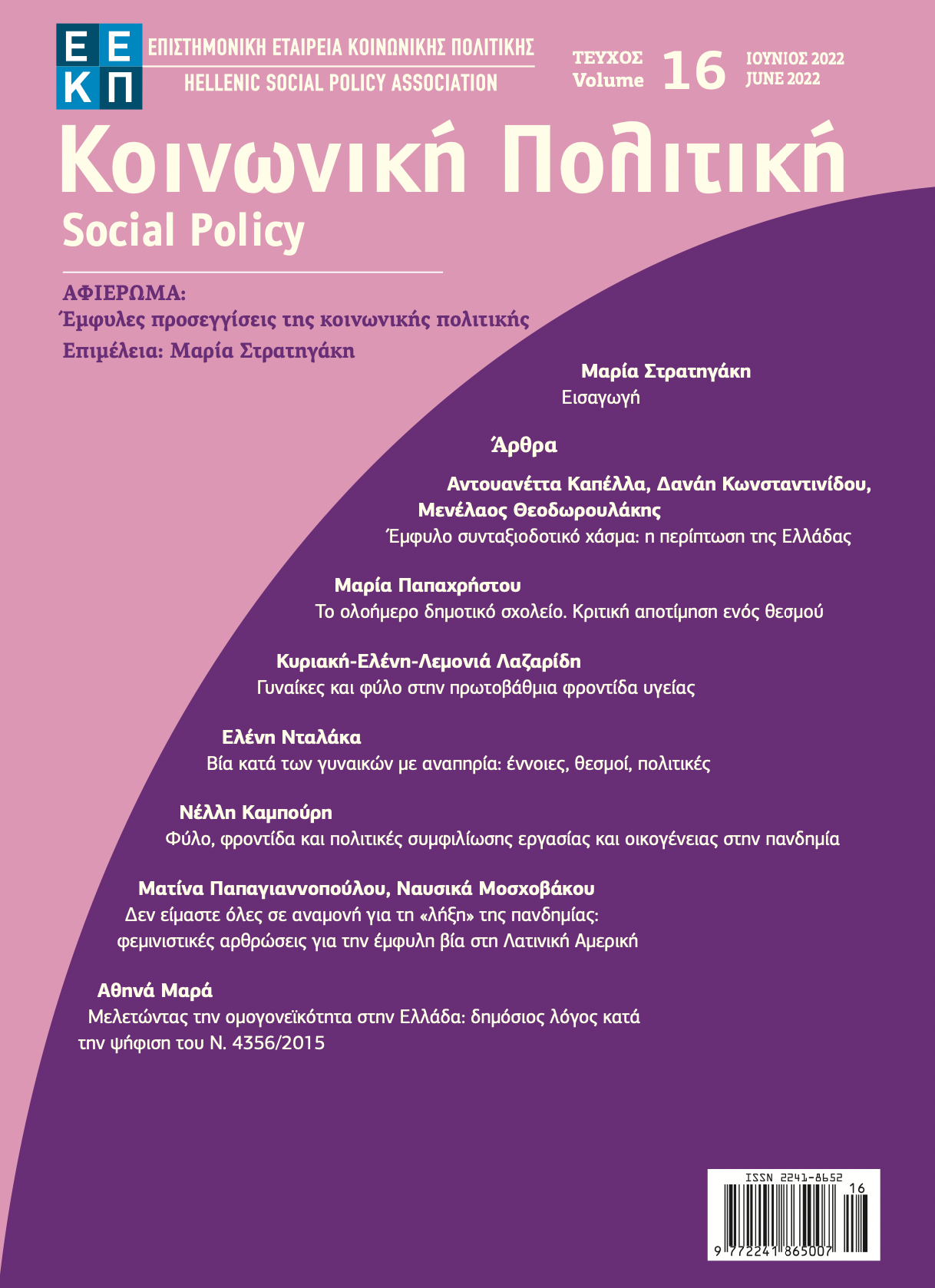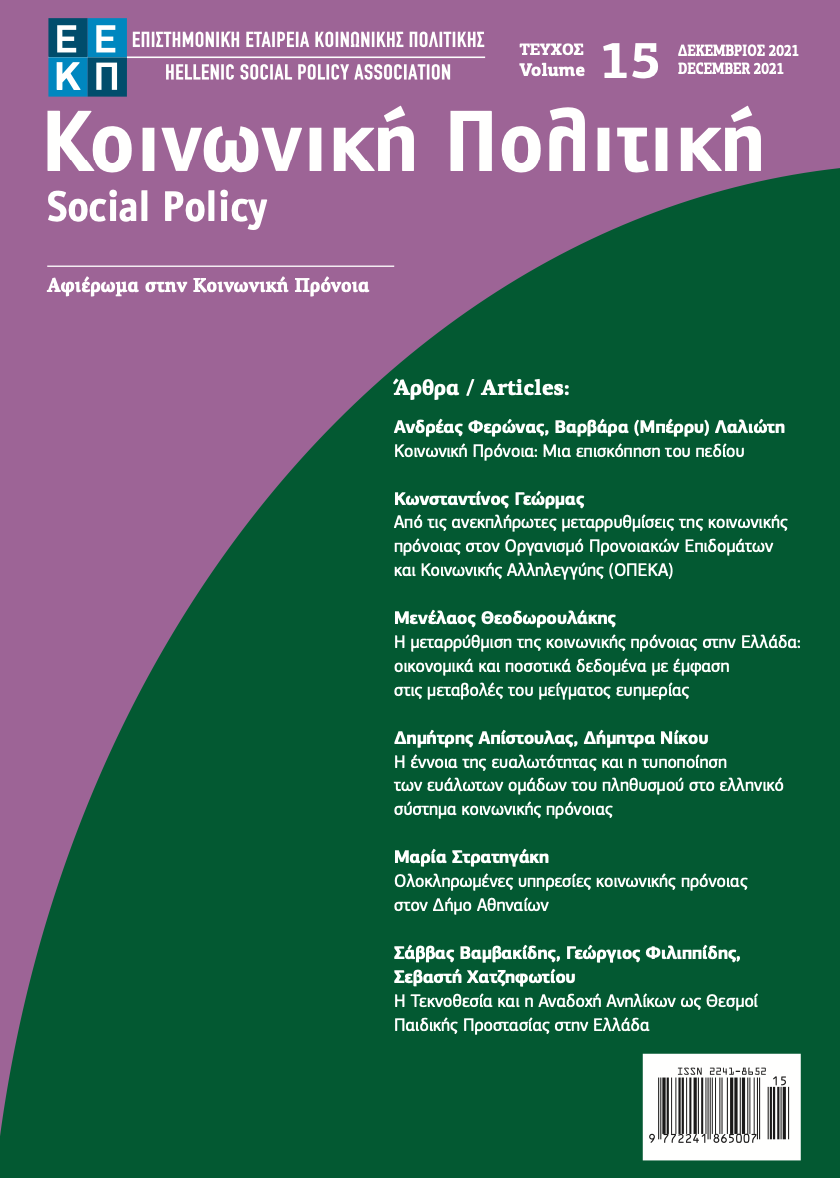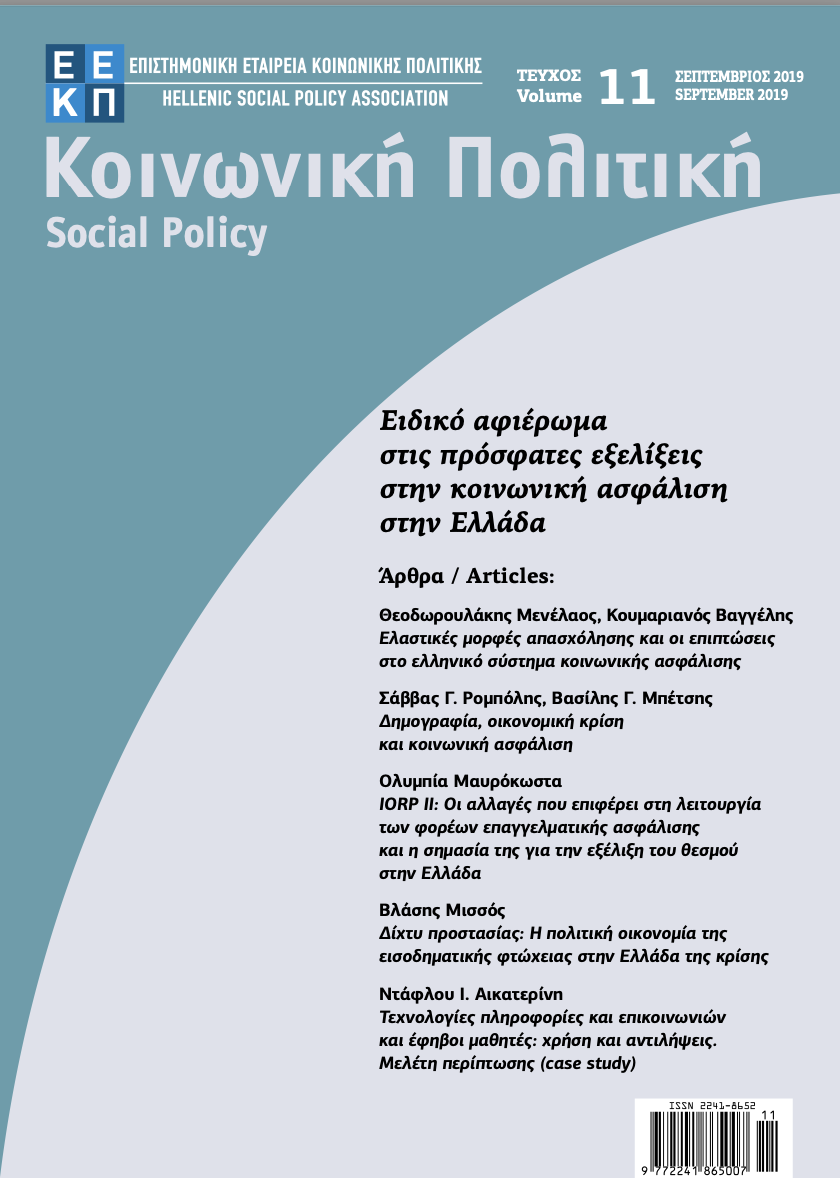Έμφυλο συνταξιοδοτικό χάσμα: η περίπτωση της Ελλάδας
Abstract
The article examines the main drivers of the gender pension gap according to the relevant literature and analyses the gender pension gap in Greece. The analysis reveals that, given that the different retirement provisions between men and women have now been eliminated, the impact of the pension system on the gender pension gap in Greece has been significantly reduced. However, the pension system fails to absorb the gender differences that prevail in the labour market and, as a result, these are the determining factors of the gender pension gap. The characteristics of women’s employment in Greece are often linked to the unequal distribution of caring responsibilities between men and women and the social norms and stereotypes, while the new forms of employment that have emerged over recent decades, along with the recent introduction of a supplementary pension fund, constitute new challenges for the future gender pension gap. It is noted that the article is largely based on the findings of the research team of the Greek National Centre for Social Research (EKKE) that participated in the project “Addressing the gender pension gap in Greece - PEGASUS”.
Article Details
- How to Cite
-
Καπέλλα Α., Κωνσταντινίδου ∆ανάη, & Θεοδωρουλάκης Μ. (2022). Έμφυλο συνταξιοδοτικό χάσμα: η περίπτωση της Ελλάδας. Social Policy, 16, 10–29. Retrieved from https://ejournals.epublishing.ekt.gr/index.php/eekp/article/view/30605
- Issue
- Vol. 16 (2022)
- Section
- Articles

This work is licensed under a Creative Commons Attribution 4.0 International License.
Authors who publish with this journal agree to the following terms:
Authors retain copyright and grant the journal right of first publication with the work simultaneously licensed under a Creative Commons Attribution Non-Commercial License that allows others to share the work with an acknowledgement of the work's authorship and initial publication in this journal.
Authors are able to enter into separate, additional contractual arrangements for the non-exclusive distribution of the journal's published version of the work (e.g. post it to an institutional repository or publish it in a book), with an acknowledgement of its initial publication in this journal.
Authors are permitted and encouraged to post their work online (preferably in institutional repositories or on their website) prior to and during the submission process, as it can lead to productive exchanges, as well as earlier and greater citation of published work.





